Roles of fragile X mental retardation protein in dopaminergic stimulation-induced synapse-associated protein synthesis and subsequent alpha-amino-3-hydroxyl-5-methyl-4-isoxazole-4-propionate (AMPA) receptor internalization
- PMID: 20457613
- PMCID: PMC2898437
- DOI: 10.1074/jbc.M110.116293
Roles of fragile X mental retardation protein in dopaminergic stimulation-induced synapse-associated protein synthesis and subsequent alpha-amino-3-hydroxyl-5-methyl-4-isoxazole-4-propionate (AMPA) receptor internalization
Abstract
Fragile X syndrome, the most common form of inherited mental retardation, is caused by the absence of the RNA-binding protein fragile X mental retardation protein (FMRP). FMRP regulates local protein synthesis in dendritic spines. Dopamine (DA) is involved in the modulation of synaptic plasticity. Activation of DA receptors can regulate higher brain functions in a protein synthesis-dependent manner. Our recent study has shown that FMRP acts as a key messenger for DA modulation in forebrain neurons. Here, we demonstrate that FMRP is critical for DA D1 receptor-mediated synthesis of synapse-associated protein 90/PSD-95-associated protein 3 (SAPAP3) in the prefrontal cortex (PFC). DA D1 receptor stimulation induced dynamic changes of FMRP phosphorylation. The changes in FMRP phosphorylation temporally correspond with the expression of SAPAP3 after D1 receptor stimulation. Protein phosphatase 2A, ribosomal protein S6 kinase, and mammalian target of rapamycin are the key signaling molecules for FMRP linking DA D1 receptors to SAPAP3. Knockdown of SAPAP3 did not affect surface expression of alpha-amino-3-hydroxyl-5-methyl-4-isoxazole-4-propionate (AMPA) GluR1 receptors induced by D1 receptor activation but impaired their subsequent internalization in cultured PFC neurons; the subsequent internalization of GluR1 was also impaired in Fmr1 knock-out PFC neurons, suggesting that FMRP may be involved in subsequent internalization of GluR1 through regulating the abundance of SAPAP3 after DA D1 receptor stimulation. Our study thus provides further insights into FMRP involvement in DA modulation and may help to reveal the molecular mechanisms underlying impaired learning and memory in fragile X syndrome.
Figures
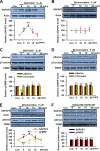


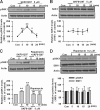

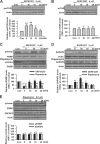

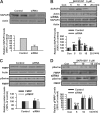
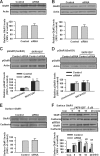
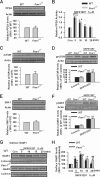
Similar articles
-
FMRP acts as a key messenger for dopamine modulation in the forebrain.Neuron. 2008 Aug 28;59(4):634-47. doi: 10.1016/j.neuron.2008.06.027. Neuron. 2008. PMID: 18760699
-
Fragile X mental retardation protein deficiency leads to excessive mGluR5-dependent internalization of AMPA receptors.Proc Natl Acad Sci U S A. 2007 Sep 25;104(39):15537-42. doi: 10.1073/pnas.0707484104. Epub 2007 Sep 19. Proc Natl Acad Sci U S A. 2007. PMID: 17881561 Free PMC article.
-
Elevated progranulin contributes to synaptic and learning deficit due to loss of fragile X mental retardation protein.Brain. 2017 Dec 1;140(12):3215-3232. doi: 10.1093/brain/awx265. Brain. 2017. PMID: 29096020
-
Mechanisms by which dopamine receptors may influence synaptic plasticity.Ann N Y Acad Sci. 2003 Nov;1003:241-9. doi: 10.1196/annals.1300.015. Ann N Y Acad Sci. 2003. PMID: 14684450 Review.
-
Molecular insights into mental retardation: multiple functions for the Fragile X mental retardation protein?Curr Issues Mol Biol. 2004 Jul;6(2):73-88. Curr Issues Mol Biol. 2004. PMID: 15119819 Review.
Cited by
-
Targeted treatments for fragile X syndrome.J Neurodev Disord. 2011 Sep;3(3):193-210. doi: 10.1007/s11689-011-9074-7. Epub 2011 Feb 19. J Neurodev Disord. 2011. PMID: 21484200 Free PMC article.
-
Treatment effects of stimulant medication in young boys with fragile X syndrome.J Neurodev Disord. 2011 Sep;3(3):175-84. doi: 10.1007/s11689-011-9085-4. Epub 2011 Jun 14. J Neurodev Disord. 2011. PMID: 21671049 Free PMC article.
-
Lipid rafts: a signaling platform linking cholesterol metabolism to synaptic deficits in autism spectrum disorders.Front Behav Neurosci. 2014 Mar 27;8:104. doi: 10.3389/fnbeh.2014.00104. eCollection 2014. Front Behav Neurosci. 2014. PMID: 24723866 Free PMC article. No abstract available.
-
Dysregulation of fragile × mental retardation protein and metabotropic glutamate receptor 5 in superior frontal cortex of individuals with autism: a postmortem brain study.Mol Autism. 2011 May 6;2:6. doi: 10.1186/2040-2392-2-6. Mol Autism. 2011. PMID: 21548960 Free PMC article.
-
Psychosis and catatonia in fragile X: Case report and literature review.Intractable Rare Dis Res. 2015 Aug;4(3):139-46. doi: 10.5582/irdr.2015.01028. Intractable Rare Dis Res. 2015. PMID: 26361565 Free PMC article.
References
-
- Bear M. F., Huber K. M., Warren S. T. (2004) Trends Neurosci. 27, 370–377 - PubMed
-
- Belmonte M. K., Bourgeron T. (2006) Nat. Neurosci. 9, 1221–1225 - PubMed
-
- Feng Y., Zhang F., Lokey L. K., Chastain J. L., Lakkis L., Eberhart D., Warren S. T. (1995) Science 268, 731–734 - PubMed
-
- Terracciano A., Chiurazzi P., Neri G. (2005) Am. J. Med. Genet. C Semin. Med. Genet. 137c, 32–37 - PubMed
Publication types
MeSH terms
Substances
Grants and funding
LinkOut - more resources
Full Text Sources
Miscellaneous

